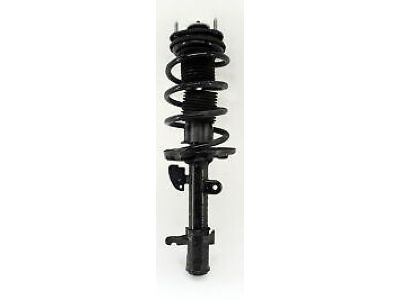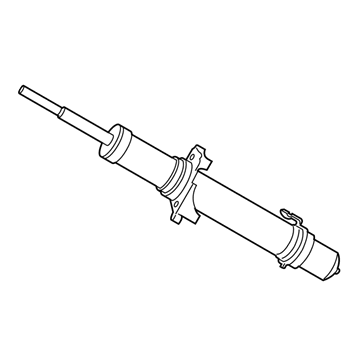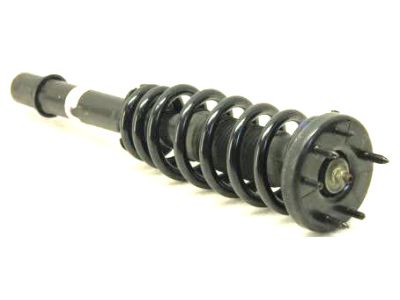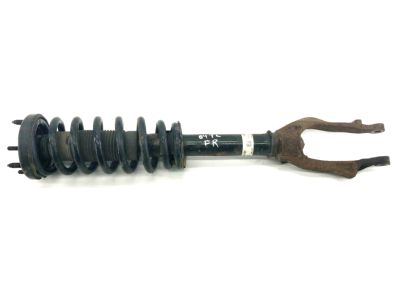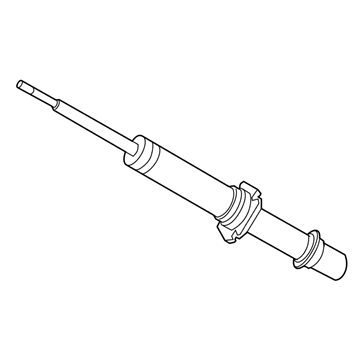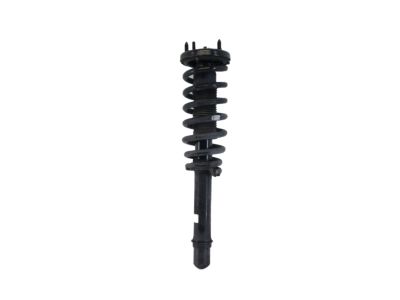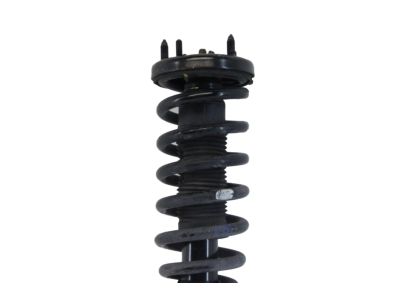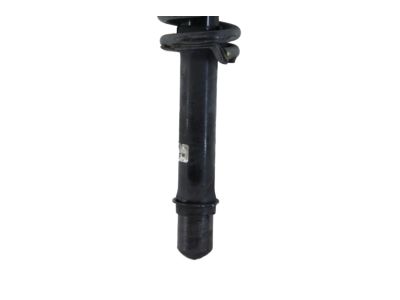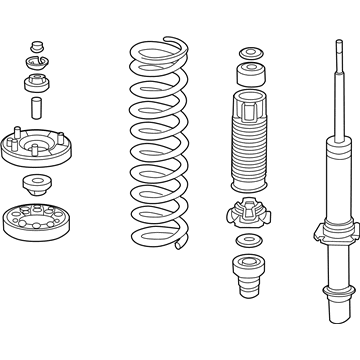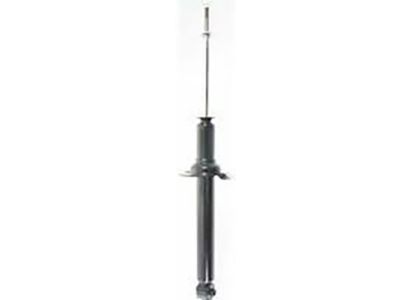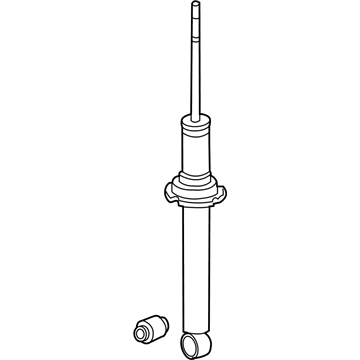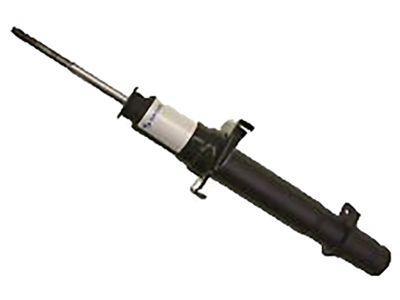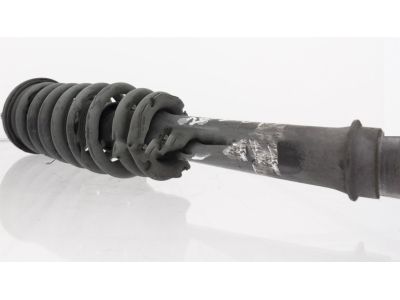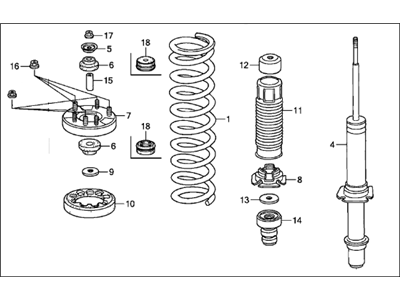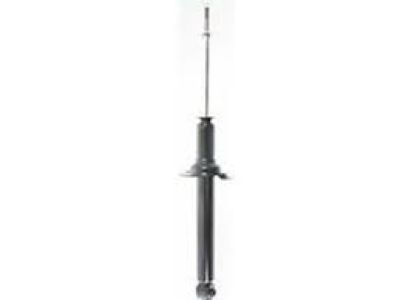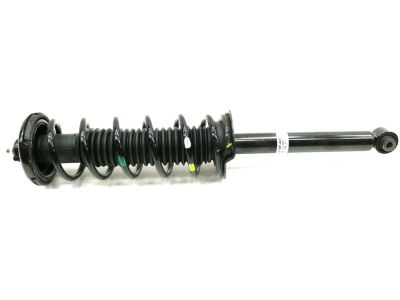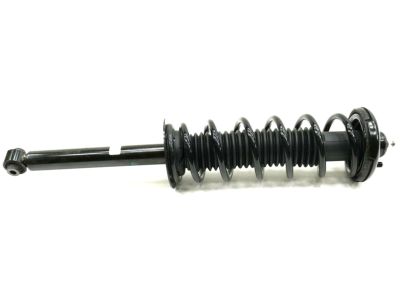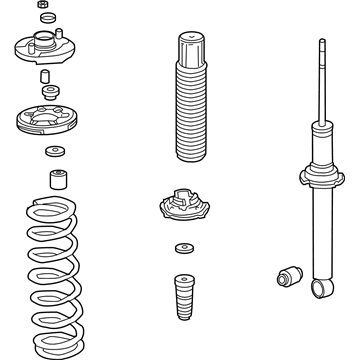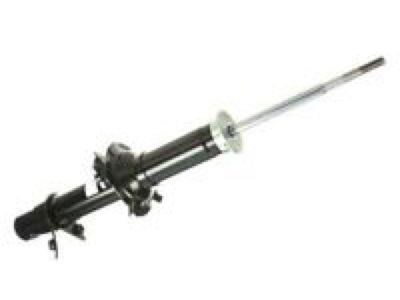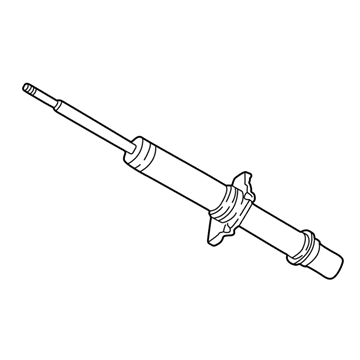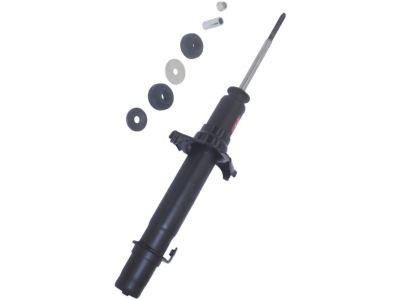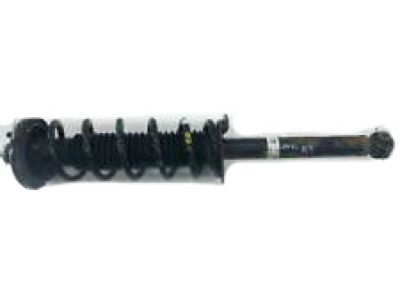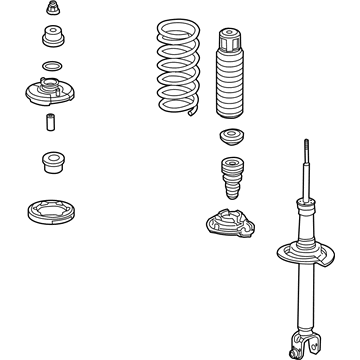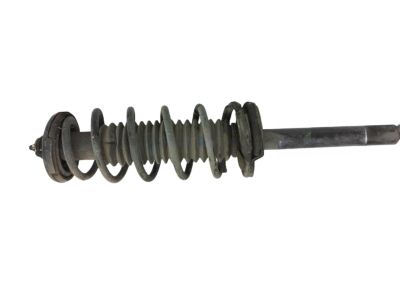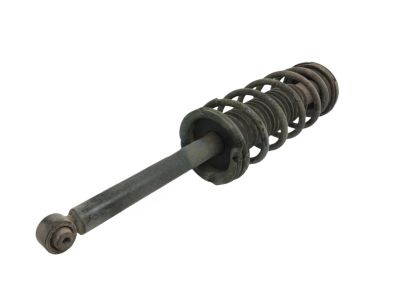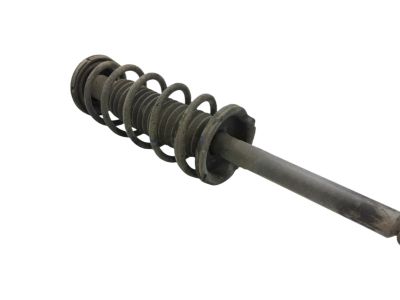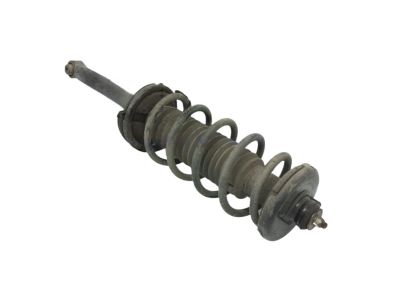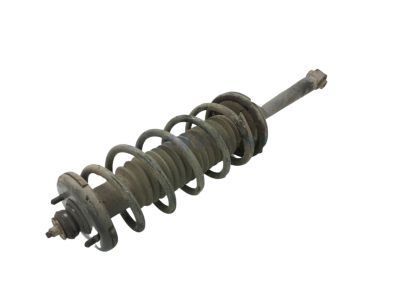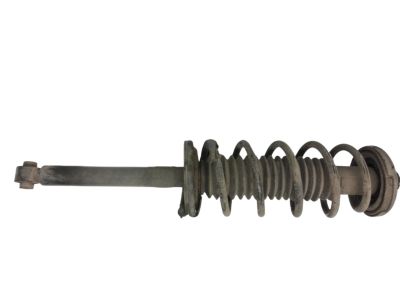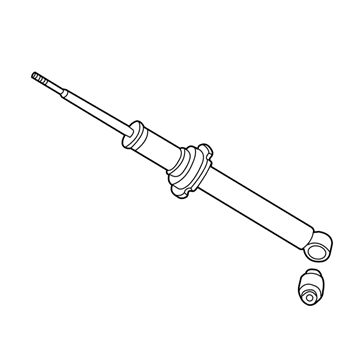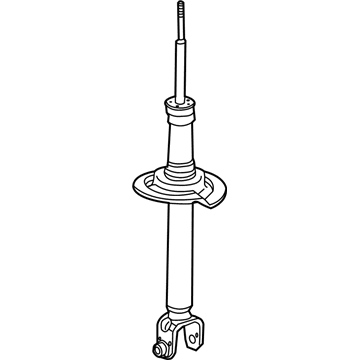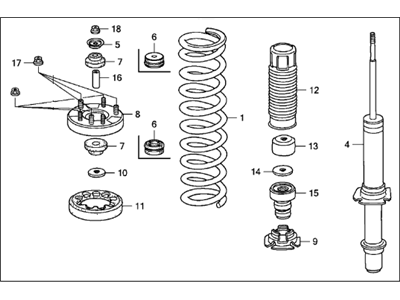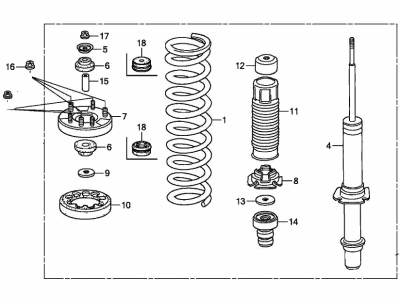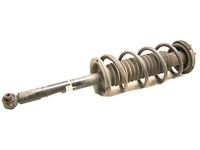×
- Hello
- Login or Register
- Quick Links
- Live Chat
- Track Order
- Parts Availability
- RMA
- Help Center
- Contact Us
- Shop for
- Acura Parts
- Acura Accessories

My Garage
My Account
Cart
Genuine Acura TL Shock Absorber
Suspension Shock Absorber- Select Vehicle by Model
- Select Vehicle by VIN
Select Vehicle by Model
orMake
Model
Year
Select Vehicle by VIN
For the most accurate results, select vehicle by your VIN (Vehicle Identification Number).
71 Shock Absorbers found

Acura TL Right Front Shock Absorber Unit
Part Number: 51611-TK5-A03$181.78 MSRP: $259.62You Save: $77.84 (30%)Ships in 1-3 Business Days
Acura TL Shock Absorber Unit, Front
Part Number: 51605-SEP-A04$160.70 MSRP: $226.98You Save: $66.28 (30%)Ships in 1-3 Business Days
Acura TL Left Front Shock Absorber Assembly
Part Number: 51602-SEP-A08$273.75 MSRP: $390.97You Save: $117.22 (30%)Ships in 1-3 Business Days
Acura TL Shock Absorber Unit, Rear
Part Number: 52611-SEP-A04$155.96 MSRP: $220.28You Save: $64.32 (30%)Ships in 1-3 Business Days
Acura TL Shock Absorber Unit, Left Front
Part Number: 51621-TK5-A03$181.78 MSRP: $259.62You Save: $77.84 (30%)Ships in 1-3 Business Days
Acura TL Left Front Shock Absorber Assembly
Part Number: 51602-SEP-A42$239.97 MSRP: $342.71You Save: $102.74 (30%)Ships in 1-3 Business Days
Acura TL Rear Shock Absorber Strut
Part Number: 52611-SEP-A06$176.52 MSRP: $252.10You Save: $75.58 (30%)Ships in 1-3 Business Days
Acura TL Rear Shock Absorber Assembly
Part Number: 52610-SEP-A06$414.89 MSRP: $668.48You Save: $253.59 (38%)Ships in 1-2 Business Days
Acura TL Right Front Shock Absorber Unit
Part Number: 51605-S0K-A52$140.68 MSRP: $226.98You Save: $86.30 (39%)Ships in 1-2 Business Days
Acura TL Left Front Shock Absorber Unit
Part Number: 51621-TK4-A03$181.88 MSRP: $259.75You Save: $77.87 (30%)Ships in 1-3 Business Days
Acura TL Right Rear Shock Absorber Assembly
Part Number: 52610-TK5-A03$219.76 MSRP: $313.86You Save: $94.10 (30%)Ships in 1-3 Business Days
Acura TL Rear Shock Absorber Unit
Part Number: 52611-S0K-A02$166.06 MSRP: $267.55You Save: $101.49 (38%)Ships in 1-2 Business DaysAcura TL Front Shock Absorber Unit
Part Number: 51605-SEP-A16$173.98 MSRP: $245.73You Save: $71.75 (30%)Ships in 1-3 Business DaysAcura TL Shock Absorber Unit, Rear
Part Number: 52611-TK4-A02$184.62 MSRP: $263.67You Save: $79.05 (30%)Ships in 1-3 Business DaysAcura TL Right Front Shock Absorber Unit
Part Number: 51611-TK5-A52$181.67 MSRP: $259.45You Save: $77.78 (30%)Ships in 1-3 Business DaysAcura TL Left Front Shock Absorber And Strut Unit
Part Number: 51621-TK5-A52$187.23 MSRP: $267.40You Save: $80.17 (30%)Ships in 1-3 Business DaysAcura TL Front Strut Assembly
Part Number: 51605-SEP-A11$141.12 MSRP: $196.00You Save: $54.88 (28%)Ships in 1-2 Business DaysAcura TL Left Front Shock Absorber Assembly
Part Number: 51602-SEP-A31$189.61 MSRP: $381.88You Save: $192.27 (51%)Ships in 1-2 Business DaysAcura TL Rear Shock Absorber Assembly
Part Number: 52610-SEP-A13$394.38 MSRP: $635.45You Save: $241.07 (38%)Ships in 1-2 Business DaysAcura TL Left Front Shock Absorber Assembly
Part Number: 51602-SEP-A41$239.97 MSRP: $342.71You Save: $102.74 (30%)Ships in 1-3 Business Days
| Page 1 of 4 |Next >
1-20 of 71 Results
Acura TL Shock Absorber
We provide a broad range of OEM Acura TL Shock Absorber at unbeatable prices on our website. For your OEM parts, You can count on the guaranteed quality, manufacturer's warranty, outstanding customer service, and prompt delivery. We look forward to your visit.
Acura TL Shock Absorber Parts Questions & Experts Answers
- Q: What should you consider before starting work on worn shocks or coil springs on Acura TL?A:If the shocks or coil springs show signs of wear such as leaking fluid, loss of damping capability, or physical damage like chips, sagging, or cracks, consider all options before starting any work. The shock absorbers or coil springs cannot be serviced individually and must be replaced if issues arise, although complete assemblies may be available on an exchange basis, saving time and effort. Before disassembling the vehicle, check the cost and availability of parts. Begin by removing the shock absorber/coil spring assembly, working on one assembly at a time to avoid mixing parts. Mount the assembly in a vise, using wood or rags to protect it, and avoid over-tightening. Install the spring compressor according to the manufacturer's instructions, compressing the spring enough to relieve pressure from the upper spring seat, which can be confirmed by wiggling the spring. Mark the orientation of the upper mount relative to the spring or damper unit for proper reinstallation. Use an Allen wrench to hold the shock damper rod while unscrewing the self-locking retaining nut with a box-end wrench. Disassemble the parts in the order they are removed. For reassembly, carefully place the spring onto the shock absorber body, ensuring it rests in the lowest part of the seat, use a new self-locking nut, and tighten it to the specified torque. Before releasing the spring compressor, ensure the upper mount is oriented as it was originally. Once the spring compressor is removed, the assembly is ready for installation.
Related Acura TL Parts
Browse by Year
2014 Shock Absorber 2013 Shock Absorber 2012 Shock Absorber 2011 Shock Absorber 2010 Shock Absorber 2009 Shock Absorber 2008 Shock Absorber 2007 Shock Absorber 2006 Shock Absorber 2005 Shock Absorber 2004 Shock Absorber 2003 Shock Absorber 2002 Shock Absorber 2001 Shock Absorber 2000 Shock Absorber 1999 Shock Absorber 1998 Shock Absorber 1997 Shock Absorber 1996 Shock Absorber 1995 Shock Absorber
